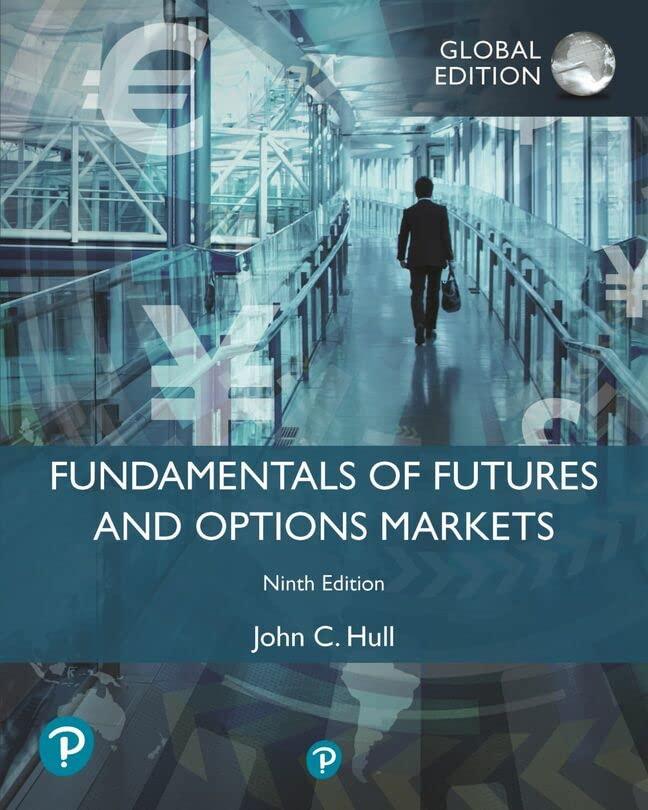Question
1.What is a lower bound for the price of a two-month European put option on a non-dividend-paying stock when the stock price is $58, the
1.What is a lower bound for the price of a two-month European put option on a non-dividend-paying stock when the stock price is $58, the strike price is $65, and the risk-free interest rate is 5% per annum?
2. An investor has a $18 mln portfolio with a beta of 1.15. They would like to use Dow Jones Industrial Average futures Big DOW DJIA (x$25) Futures to hedge its risk. The DJIA futures is currently standing at 29 600, and each contract is for delivery of $25 times the index. What is the hedge that minimizes risk?
3. Consider S, 150, X = 150, r = 5%, T = 1.0, = 20%, and = 5%. We have a short position in put options on 9,000 shares of stock. Based on this information, we note Delta call = 0.540, and Delta put = 0.461. Assume each stock option contract is for one share of stock. What is an appropriate delta hedge transaction, assuming the hedging instrument is stock. (Indicate in your answer a transaction type buy or short sell-and a number of hedging units).
4. Consider shares that are currently trading on the Stock Exchange at $2.40. Our view is that the stock price will be steady for the next three months, so we decide to sell some three-month out-of-the-money calls with exercise price at 2.50 in order to enhance our returns by receiving the option premium. Risk-free government securities are paying 1.60% and the stock is yielding $ 0.441%. The stock volatility is 4.6%. We use the BSM model to value the calls. Which statement is correct? Put down The BSM model inputs. {underlying, exercise, expiration, risk-free rate, dividend yield, and volatility}
5. Suppose that you enter into a six-month forward contract on a non-dividend-paying stock when the stock price is $30 and the risk-free interest rate (with continuous compounding) is 12% per annum. What is the forward price?
6. Suppose we are given the following information on call and put options on a stock: S = 100, X = 100, r = 5%, T = 1.0, and = 30%. Thus, based on the BSM model, it can be demonstrated that PV(X) = 95.123, d1 = 0.317, d2 = 0.017, N(d1) = 0.624, N(d2) = 0.507, N(d1) = 0.376, N(d2) = 0.493, c = 14.23, and p = 9.35. Consider the call option replication and calculate the initial cost of replicating strategy.
7. A stock index is currently 300, the dividend yield on the index is 3% per annum, and the risk-free interest rate is 8% per annum. What is a lower bound for the price of a six-month European call option on the index when the strike price is 290?
8. Suppose that the 9-month and 12-month LIBOR rates are 0.0135 and 0.0165, respectively. What is the value of an FRA where 0.0235 is received and LIBOR is paid on 8 million for the period? All rates are quarterly compounded. Assume that LIBOR is used as the risk-free discount rate.
9. A company has a portfolio of stocks worth $33 million. The beta of the portfolio is 1.3. The company would like to use six month futures contract on a stock index to change beta of the portfolio to 0.65 during the five month period prior to the month of the hedging futures expiration. The index is currently 3200, and each contract is on $250 times the index. What position should the company take?
Step by Step Solution
There are 3 Steps involved in it
Step: 1

Get Instant Access to Expert-Tailored Solutions
See step-by-step solutions with expert insights and AI powered tools for academic success
Step: 2

Step: 3

Ace Your Homework with AI
Get the answers you need in no time with our AI-driven, step-by-step assistance
Get Started


